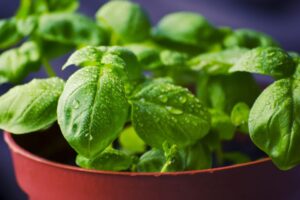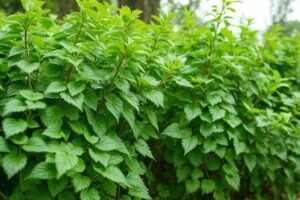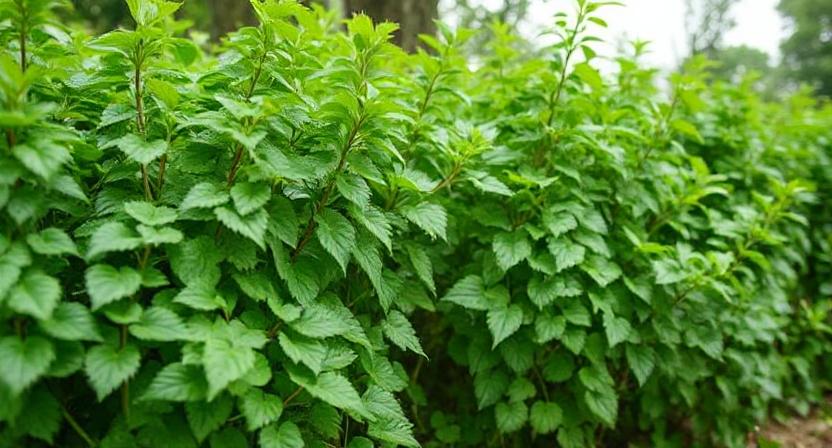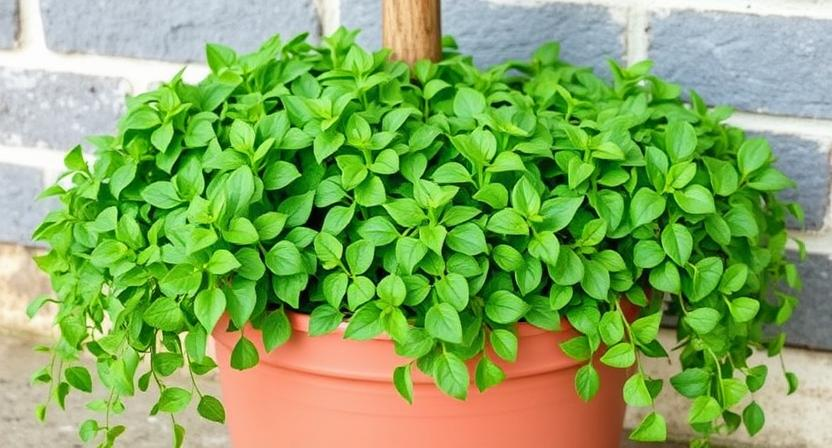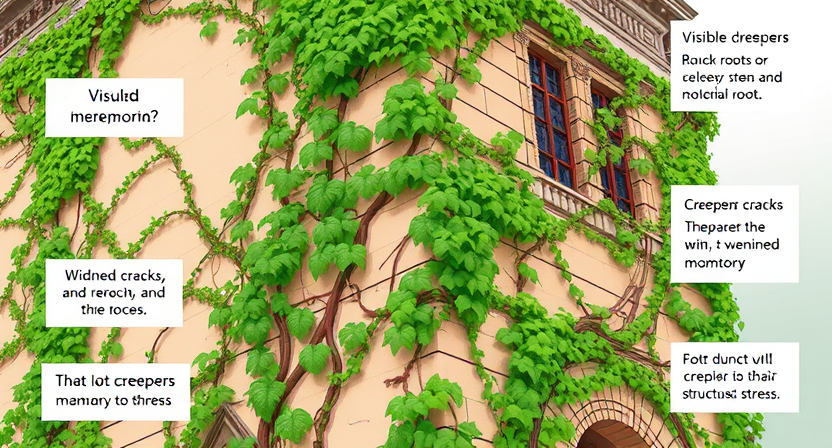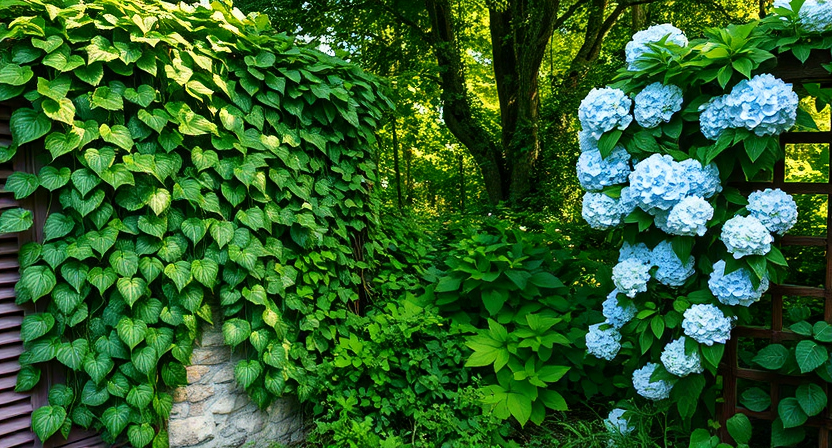Understanding the Environmental Conditions
The ability to understand and adapt to environmental conditions is crucial for the survival of creepers. These plants thrive in a variety of habitats, ranging from dense forests to open grasslands. One key environmental factor that shapes the distribution and behavior of creepers is light availability. Creepers have evolved different strategies to maximize their exposure to sunlight, as it is essential for photosynthesis and subsequent growth. Some species have elongated stems that trail along the ground or climb up trees, enabling them to reach the sun-drenched canopy. Others have broad leaves that capture as much light as possible, while some rely on specialized structures like tendrils to grasp and cling onto vertical surfaces.
Another important aspect of the environment that affects creepers is soil composition. Different species have varying requirements in terms of soil fertility, pH levels, and moisture content. Creepers that inhabit nutrient-poor soils have developed mechanisms to extract and absorb essential nutrients efficiently. These adaptations may include extensive root systems that explore a larger volume of soil, symbiotic relationships with nitrogen-fixing bacteria, or the ability to break down organic matter more effectively. Understanding the specific soil requirements of different creeper species is crucial for their successful cultivation in gardens or reforestation efforts.
• Creepers have evolved different strategies to maximize their exposure to sunlight, such as elongated stems or climbing up trees.
• Some creepers have broad leaves that capture as much light as possible.
• Certain creepers rely on specialized structures like tendrils to grasp and cling onto vertical surfaces.
• Soil composition is another crucial factor for creepers, with different species having varying requirements in terms of fertility, pH levels, and moisture content.
• Creepers inhabiting nutrient-poor soils may have adaptations like extensive root systems or symbiotic relationships with nitrogen-fixing bacteria.
• Understanding the specific soil requirements of creeper species is important for successful cultivation in gardens or reforestation efforts.
Physical Adaptations of Creepers
Creepers, also known as climbing plants, have developed various physical adaptations to thrive in their unique surroundings. One of their notable physical features is their long, slender stems, which enable them to climb and attach themselves to surfaces such as walls, trees, or even other plants. These flexible stems provide the necessary support for creepers to grow vertically and access sunlight, a crucial resource for their survival. Additionally, creepers often have specialized structures called tendrils, which are thin, wiry appendages that serve as hooks or anchor points. These tendrils allow the creeping plants to latch onto nearby objects, providing them with stability and the ability to reach higher levels.
Another physical adaptation seen in many creepers is the presence of specialized root systems. Unlike other plants, creepers often possess adventitious roots that emerge from the nodes along their stems. These roots not only anchor the plant to the ground but also aid in nutrient absorption. They can penetrate various surfaces, such as tree barks or rocky terrains, ensuring a stable foothold and maximizing the nutrient uptake from the environment.
In conclusion, creepers have evolved a range of physical adaptations to overcome the challenges posed by their environment. Their long stems and tendrils allow them to climb and access sunlight, while their specialized root systems provide stability and efficient nutrient absorption. Understanding these physical adaptations is vital in comprehending how creepers have adapted to survive in diverse habitats.
• Creepers have long, slender stems that enable them to climb and attach themselves to surfaces
• These flexible stems provide support for vertical growth and access to sunlight
• Creepers often have tendrils that serve as hooks or anchor points, allowing them to latch onto nearby objects
• Tendrils provide stability and the ability to reach higher levels
• Many creepers possess adventitious roots that emerge from nodes along their stems
• Adventitious roots anchor the plant to the ground and aid in nutrient absorption
• These roots can penetrate various surfaces, ensuring a stable foothold and maximizing nutrient uptake
Morphological Adjustments in Creepers
Creepers, with their unique growth habit, have evolved certain morphological adjustments to thrive in their environment. One of the key adaptations is the development of specialized structures that allow them to anchor themselves to various substrates. These structures, known as adventitious roots or tendrils, enable creepers to attach themselves firmly to walls, trees, or other support structures. By utilizing these morphological adjustments, creepers are able to climb and spread out horizontally, maximizing their access to sunlight and nutrients.
Another morphological adjustment observed in creepers is the modification of their leaves. Creepers often have longer, narrower leaves compared to upright plants. This adaptation helps reduce wind resistance, preventing leaf damage or breakage as they grow vertically or along the ground. Additionally, some creepers possess modified leaves called hooks or barbs which aid in their attachment to nearby surfaces. These specialized leaf structures play a crucial role in the successful colonization and growth of creepers in a variety of habitats.
Through these morphological adjustments, creepers have successfully adapted to their surroundings, allowing them to flourish in diverse environments. These adaptations not only support their growth and survival but also contribute to their ecological importance within ecosystems. Understanding the morphological adjustments of creepers provides valuable insights into the remarkable ways in which organisms adapt to their environment.
• Creepers have developed specialized structures known as adventitious roots or tendrils to anchor themselves to various substrates.
• These structures enable creepers to attach themselves firmly to walls, trees, or other support structures.
• By utilizing these morphological adjustments, creepers are able to climb and spread out horizontally, maximizing their access to sunlight and nutrients.
• Another morphological adjustment observed in creepers is the modification of their leaves.
• Creepers often have longer, narrower leaves compared to upright plants.
• This adaptation helps reduce wind resistance and prevents leaf damage or breakage as they grow vertically or along the ground.
• Some creepers possess modified leaves called hooks or barbs which aid in their attachment to nearby surfaces.
• These specialized leaf structures play a crucial role in the successful colonization and growth of creepers in a variety of habitats.
Through these morphological adjustments:
– Creepers have successfully adapted to their surroundings
– They can flourish in diverse environments
– The adaptations support their growth and survival
– The adjustments contribute to their ecological importance within ecosystems
Understanding the morphological adjustments of creepers provides valuable insights into:
– The remarkable ways organisms adapt
– How organisms adapt specifically to their environment.
Behavioral Adaptations in Creepers
Creepers, like many other plants, have developed various behavioral adaptations to ensure their survival in different environments. One such adaptation is their ability to orient their growth towards light sources. Creepers possess a unique characteristic called phototropism, which allows them to grow towards light to maximize their photosynthetic potential. This behavior is particularly crucial in environments where light conditions vary or where creepers often find themselves in the shade of taller plants. By bending and reorienting their stems and leaves towards the light, creepers optimize their chances of capturing sunlight for photosynthesis, essential for their energy production.
Additionally, creepers exhibit a remarkable ability to respond to physical stimuli and adjust their growth accordingly. They possess a form of sensory perception known as thigmotropism, enabling them to respond to touch. When a creeper’s stem or tendril comes into contact with a supporting structure, such as a tree trunk or a trellis, it triggers a growth response that involves coiling around the structure. This behavior not only provides mechanical support but also allows the creeper to effectively secure itself and reach higher areas, where it can capture more light and outcompete other plants for resources. Thigmotropism is a vital behavioral adaptation that gives creepers a competitive advantage in their quest for survival and successful reproduction.
• Creepers have the ability to orient their growth towards light sources, known as phototropism
• Phototropism allows creepers to maximize their photosynthetic potential and capture sunlight for energy production
• This adaptation is particularly important in environments with varying light conditions or where creepers are shaded by taller plants
• Creepers bend and reorient their stems and leaves towards the light to optimize their chances of capturing sunlight
• Creepers exhibit thigmotropism, a form of sensory perception that allows them to respond to touch
• When a creeper’s stem or tendril comes into contact with a supporting structure, it triggers a growth response involving coiling around the structure
• Thigmotropism provides mechanical support for the creeper and helps it secure itself on surfaces like tree trunks or trellises
• Coiling around structures also enables creepers to reach higher areas where they can capture more light and outcompete other plants for resources
Overall, these behavioral adaptations in creepers play a crucial role in their survival and successful reproduction. Phototropism ensures that they can effectively utilize available sunlight for photosynthesis, while thigmotropism allows them to secure themselves on supportive structures and reach higher areas for better access to resources. These adaptations give creepers a competitive advantage in various environments, enabling them to thrive even under challenging conditions.
Reproductive Strategies of Creepers
Creepers have evolved various reproductive strategies to ensure their species’ survival and dispersal. One common strategy is the production of abundant, lightweight seeds that are easily carried by wind or water. These seeds often have specialized structures or appendages that aid in their dispersal, such as feathery or wing-like structures that allow them to float through the air or float on water surfaces. By utilizing these methods, creepers are able to colonize new areas and increase their chances of successful reproduction.
Another reproductive strategy employed by some creepers is vegetative propagation. This involves the production of new individuals through asexual means, such as by forming adventitious roots or producing aboveground runners. These new individuals are genetically identical to the parent plant and can quickly establish themselves in favorable conditions. This strategy is particularly advantageous in environments where sexual reproduction may be challenging due to limited resources or harsh conditions. By employing both sexual and asexual reproductive strategies, creepers have adapted to ensure their long-term survival and persistence in a wide range of habitats.
• Creepers produce abundant, lightweight seeds that can be easily carried by wind or water.
• Specialized structures or appendages on these seeds aid in their dispersal, such as feathery or wing-like structures.
• These adaptations allow the seeds to float through the air or float on water surfaces.
• By utilizing these methods, creepers are able to colonize new areas and increase their chances of successful reproduction.
• Some creepers also employ vegetative propagation as a reproductive strategy.
• Vegetative propagation involves the production of new individuals through asexual means.
• This can be done by forming adventitious roots or producing aboveground runners.
• The new individuals produced through vegetative propagation are genetically identical to the parent plant.
• This allows them to quickly establish themselves in favorable conditions without relying on sexual reproduction.
• Vegetative propagation is particularly advantageous in environments with limited resources or harsh conditions where sexual reproduction may be challenging.
• Creepers have evolved both sexual and asexual reproductive strategies to ensure their long-term survival and persistence in various habitats.
Responses to Temperature Variations
One of the key challenges for creepers is adapting to temperature variations in their environment. These plants have developed several mechanisms to cope with both hot and cold conditions. In response to high temperatures, creepers often exhibit physiological adaptations such as closing their stomata to reduce water loss through transpiration. Additionally, some species may have specialized leaf structures that help reflect sunlight and prevent overheating. On the other hand, when faced with extremely low temperatures, creepers may undergo biochemical changes, producing antifreeze compounds to protect their cells from freezing. These strategies allow creepers to effectively regulate their temperature and survive in diverse climates.
• Creepers close their stomata to reduce water loss through transpiration in response to high temperatures.
• Some creepers have specialized leaf structures that help reflect sunlight and prevent overheating.
• Creepers undergo biochemical changes to produce antifreeze compounds when faced with extremely low temperatures.
• These strategies enable creepers to regulate their temperature and survive in diverse climates.
Coping with Rainfall Patterns
One of the key challenges for creepers is coping with varying rainfall patterns. The availability of water is essential for their survival, as it directly impacts their growth and development. Creepers have evolved various mechanisms to adapt to different rainfall patterns in their respective habitats.
In regions with high rainfall, creepers have developed extensive root systems that help them effectively absorb and store water. These roots often spread horizontally, allowing the creepers to access water from a larger area. Additionally, some creepers have specialized structures that enable them to capture water from rainfall directly, such as modified leaves that can channel water towards the roots. These adaptations enhance their ability to cope with frequent and abundant rainfall, ensuring their continued survival in these conditions.
• Creepers in regions with high rainfall have extensive root systems
• Horizontal spread of roots helps creepers absorb and store water effectively
• Some creepers have modified leaves to capture water from rainfall directly
• Adaptations enhance ability to cope with frequent and abundant rainfall
Dealing with Humidity Levels
Creepers, like other plants, exhibit various strategies to cope with humidity levels in their environment. One common adaptation is the presence of specialized leaf structures that help in effective water management. Many creepers possess large, thin leaves with a high surface area to volume ratio, allowing for increased transpiration. This helps to maintain a balance between water loss and uptake, preventing excess moisture build-up in high humidity conditions.
In addition to leaf structures, some creepers also employ unique mechanisms to deal with humidity levels. For instance, certain species have developed specialized root systems that enable them to absorb water efficiently even in humid environments. These roots may be capable of extracting moisture from the air, providing a supplementary source of hydration. Furthermore,a few creepers have modified their stomata, tiny pores on the leaves, to regulate water loss. By closing their stomata during periods of high humidity, they can minimize water loss and prevent excessive moisture absorption. This adaptability to changing humidity levels is crucial for the survival of creepers in diverse environments.
• Creepers often have large, thin leaves with a high surface area to volume ratio
• This allows for increased transpiration and helps maintain water balance in high humidity conditions
• Some creepers have specialized root systems that can absorb moisture from the air
• These roots provide an additional source of hydration in humid environments
• Certain creepers have modified stomata on their leaves to regulate water loss
• By closing their stomata during periods of high humidity, they can prevent excessive moisture absorption.
Surviving in Extreme Climates
Survival in extreme climates poses significant challenges for creepers, the resilient plants that thrive in various habitats. These plants have evolved remarkable adaptations to cope with the harsh environments they encounter. One of the key strategies is their ability to withstand extreme temperatures. Creepers have developed specialized mechanisms to regulate their internal temperature, allowing them to survive both scorching heat and freezing cold. The ability to endure these extreme temperature fluctuations sets them apart from other plant species and enables their persistence in environments with intense climate variability.
In addition to temperature variations, creepers also face the daunting task of dealing with limited water availability in extreme climates. These tough plants exhibit a unique water conservation mechanism known as xerophytism. Through their thick waxy cuticles and reduced leaf surface area, creepers are able to minimize water loss through evapotranspiration. Furthermore, some creepers have evolved deep root systems that help them access groundwater sources, making them resilient to drought conditions. By efficiently managing their water resources, creepers are able to survive in arid, desert-like landscapes where other plants struggle to thrive.
Surviving in extreme climates requires an impressive array of adaptations, from temperature regulation to water conservation strategies. These remarkable abilities allow creepers to navigate the challenges posed by their surroundings, ensuring their survival in even the harshest environmental conditions. The intricate balance between these adaptive traits showcases the wonders of nature and grants creepers the tenacity to conquer and flourish in the most extreme climates the world has to offer.
• Creepers have evolved mechanisms to regulate their internal temperature, allowing them to withstand extreme temperatures.
• Their ability to endure both scorching heat and freezing cold sets them apart from other plant species.
• Creepers exhibit xerophytism, a unique water conservation mechanism, in order to cope with limited water availability.
• Thick waxy cuticles and reduced leaf surface area help minimize water loss through evapotranspiration.
• Some creepers have deep root systems that allow them to access groundwater sources, making them resilient to drought conditions.
• The adaptive traits of temperature regulation and water conservation strategies enable creepers to survive in even the harshest environmental conditions.
Impact of Climate Change on Creeper Adaptation
The impact of climate change on creeper adaptation is becoming increasingly evident. Rising temperatures, altered rainfall patterns, and changing humidity levels are all having a profound effect on the survival and growth of these plants. Creepers that have evolved to thrive in specific environmental conditions are now facing the challenge of adapting to these changing climates.
One significant consequence of climate change is the disrupted timing of seasons. As temperatures become more erratic, creepers may struggle to synchronize their reproductive strategies with the appropriate environmental cues. This can result in failed pollination or limited seed production, ultimately affecting the overall population dynamics of these plants. Additionally, extreme weather events, such as heavy rains or prolonged droughts, can further exacerbate the challenges for creepers by damaging their delicate root systems or preventing proper nutrient uptake. As climate change continues to unfold, understanding and addressing the impact on creeper adaptation will be crucial in ensuring their long-term survival.
• Rising temperatures, altered rainfall patterns, and changing humidity levels are impacting creeper adaptation
• Creepers that have evolved to thrive in specific environmental conditions now face the challenge of adapting to changing climates
• Disrupted timing of seasons due to climate change can affect reproductive strategies and seed production in creepers
• Extreme weather events like heavy rains or prolonged droughts can damage creeper root systems and hinder nutrient uptake
• Understanding and addressing the impact of climate change on creeper adaptation is crucial for their long-term survival.



